Q&A With Anistatia Miller and Jared Brown
The Longtime Gin-Writing and Gin-Making Team Have a New Book on, Yes, Gin!
No cocktail and spirits writers and historians have a longer and most constant relationship with gin than the team of Jared Brown and Anistatia Miller.
The public first heard of the couple in 1995 with the publication of their prescient volume Shaken Not Stirred®: A Celebration of the Martini. From their base in England’s West Country, they have been publishing new works on various spirits and cocktail-related subjects ever since. Their numerous accolades include the 2021 Helen David Lifetime Achievement Award from the Tales of the Cocktail Spirited Awards, making them to date the only writers to have received that honor.
Brown and Miller are also among the few booze scholars who have made the transition into industry professionals. Brown is the co-founder and Master Distiller for Sipsmith Distillery, the first newly-licensed, pot-still distillery to open in London in over 180 years, and one that produces one of the best-regarded gins of the modern gin era. They have also worked as tasters and consultants for the gins Beefeater 24 and No. 3 Gin. (The couple also had a hand in the rising popularity of the throwing technique for making Martinis.)
Their latest work is A Most Noble Water: Revisiting the Origins of English Gin (out worldwide on Aug. 27 and available for pre-order now), an ambitious reassessment of the history of gin which Miller joked could be either regarded as the work of three years (the writing) or 29 (the unending research).
We interviewed Miller about the new book—with Brown chiming in at one point! The exchange follows, as the second Q&A of Gin Week, which comes to a close tomorrow.
Also ending tomorrow is the 20% sale at The Mix. We haven’t offered a discount on annual subscriptions for more than a year, and we probably won’t offer one again for a year or more. So strike while the iron is hot! Details are below:
Here at The Mix, we are grateful to have a large group of subscribers—and quite a few new free subscribers who have all joined within the last few weeks.
We appreciate all of you and hope that this week you really enjoy the Gin articles, interviews, recipes and round-ups we have in store.
During Gin week, if you decide to become an annual member, we are offering 20% OFF if you click on the link below. The secret password is GIN.
Thanks from The Mix!
And, now, to the interview!:
THE MIX: How did the new book A Most Noble Water come about?
Anistatia Miller: When we wrote about gin’s origins in our first book, Shaken Not Stirred®: A Celebration of the Martini, back in 1995, we took every word as gospel from the likes of John Watney’s book Mother’s Ruin and John Doxat’s The Gin Book. Back then, we were cutting our teeth as fledgling drinks detectives. The question marks blew up like air ballons when we were commissioned in 2007 and 2008 to write Beefeater Gin’s book of London’s Classic Gin Cocktails and began researching deeper into the spirit’s history as background material for two different phases of the Beefeater distillery’s visitor center.
Our curiosity was exacerbated when we concurrently started looking for Old Tom gin recipes to potentially develop with the Worldwide Cocktail Club’s Henry Besant and Dre Masso, plus Charles Maxwell of Thames Distillers. This became an obsession when, in December 2007, we met Jared’s future cohorts and co-founders in Sipsmith Limited at a Negroni party hosted at the Beefeater Distillery. When the three of them founded Sipsmith, I was still working on the Beefeater visitor center project and started working with Nick Blacknell to organize the Havana Club Cocktail Grand Prix in Cuba.
Jared was on the road around the globe spreading the Sipsmith gospel, and we had moved from London to the Cotswolds by 2010. After researching and writing articles and books on various points of drink history, like the two-volume Spirituous Journey: A History of Drink in 2010 and The Deans of Drink in 2013, I wanted to learn how to properly research and engage with primary source material on a seriously academic level, instead of relying on the hearsay of other authors. That’s when I made the somewhat insane decision to take a master’s degree (MA) in English history and a second master’s degree (MSc) in English local history at the University of Oxford. Both dissertations focussed on early modern English brewing and distilling. With those two degrees and the first load of source material stowed away in my office, I went for the golden ring and started work on my doctoral thesis at the University of Bristol in 2019. (Oxford did not have an adviser who could work with me on drink history, so I had to find more fertile ground and, luckily, I did.)
That’s when piles of research from various archives and libraries led to photos of rare manuscripts and medieval books which led to routing through stacks of notebooks and finally writing an academic article on the similarities of influence of the excise acts and other Parliamentary legislation on the nascent brewing and distilling trades from the 15th through the early 18th century. It took nearly two years of submitting and responding to intense peer review: The academic reviewers nitpicked and argued every point I made until all were satisfied. The article—“A most noble water of vertues: revisiting English gin’s origins and its relationship with beer”—was published in 2023.
While waiting for the verdict from the review panel, Jared and I set out to expand the article into a book with all of Jared’s talent in making my research and engagement comprehensible and accessible to normal humans with his natural touch of humor. The result: A Most Noble Water: Revisiting the Origins of English Gin.
Jared here: We had been casually searching online for years for earlier mentions of juniper in distillation but became preoccupied around 2016—I can’t recall why. The one discovery that stood out was a formula in the 1639 edition of The Distiller of London. I brought it to Sam [Galsworthy] and Fairfax [Hall, at Sipsmith], but the whole book was written in two different codes. They didn’t quite grasp its import at that time. (Now, we are about to release it this September.) In the first COVID lockdown, I showed the book to Anistatia. She was in the midst of writing her doctorate. But I’m not great at keeping her focused. As I expected, she immediately began deciphering it. About six months later, I saw her working on it and asked if she had seen Dr. John French’s 1652 deciphered version. I’d forgotten to mention it to her. She exploded. I raced out to the safety of the garden. Forty-five minutes later, I poked my head in the door: “Is it safe?” “He got it all wrong! Come check out some of these mistakes!” She found a total of three distillate formulas with juniper, including the one with orange and lemon peels and spices—a modern gin structure from before the purported arrival of Dutch genever in England. We ended up publishing the deciphered version in 2020 with all proceeds going to the distilling industry charity. We took that formula as a starting point: digging back further while again focusing solely on primary source information. It was this path of research that ultimately led us to discover that literally everything we had been taught about gin and subsequently taught about gin was made up (I abhor the compulsive use of “literally.” but here it fits).
THE MIX: You have been writing about and studying gin for many years now. Why this book now?
AM: You could say Jared and I have come full circle from an initial curiosity to see if we could launch a website on the subject of Martinis on Halloween night 1995 to delving deep into the DNA of a spirit that we are both dearly passionate about making, mixing, and drinking. You could say that although we have not written everything in stone (hey, we weren’t present at the birth of aqua fructum or cordial gin let alone London dry gin), we have set a path for other drink historians to analyze and expand upon the literature with further research. That’s the other lesson seven years of academic study and degrees taught me. There’s always more research and more stones to turn over: History never ends.
THE MIX: How long did it take to write the book?
AM: The research? Oh, let’s call it 29 years. The actual writing of the finished book? Hmmm, maybe two years plus the two years of writing the baseline academic article. Let’s call it three years.
“While the world has long lifted the Gin & Tonic into the top spot, we are definitely Martini drinkers. Express and discard the twist, please. Gibsons were strictly a lockdown obsession.”—Anistatia Miller.
THE MIX: What new things did you discover about the history of gin in your research for the book?
AM: Gin didn’t come from Holland or the Netherlands. It was not the offspring of genever. The recipe for distilling a spirit from fermentation of malted barley (read: beer) and rectifying it with juniper berries came from a German distillation book published in 1500, which was translated into English and published in London in 1527. And that recipe was a common drink called cramatbeerwasser which was distilled by German housewives around the mid-1400s. Men were making a juniper-rectified brandy—wacholderbeerwasser—around the same time. Why? Women made beer as part of their domestic duty. Men made brandy from wine as a commercial venture.
There were no “gin acts” passed by Parliament in the 1700s. The eight statutes most writers refer to were intended to regulate the production of all English spirits. That includes brandy, molasses spirit, “sweets,” and whiskey. The use of the term “gin act” was a casual term employed by the press to get the public’s attention. The word “gin” did not appear in them.
There was no Gin Craze. Looking at the statistics and court records, there was no hysterical binge like the one depicted in William Hogarth’s illustration of “Gin Lane”. Paired along with “Beer Street” the images were tabloid puffery, if you will. Paying off Daniel Defoe and Hogarth amongst other influencers allowed beer producers to regain footing as distillers started encroaching on their drinks trade.
In truth, the most impactful legislation that affected gin production and the English distilling trade was twofold. First, the excise tax scheme established in the 1640s hit both brewing and distilling in their respective economic sensitive spots just as they were gaining ground with conspicuous consumers—folks who bought goods instead of making their own. The second was a statute passed on 27 June, 1825, which:
—set excise rates on hydrometer proof spirits;
—compelled distillers, rectifiers, spirits dealers, and spirits retailers to take out an annual £10 licence for each individual activity;
—prohibited any English distiller from owning a still with a capacity of less than 400 gallons;
—prohibited anyone who made beer, “sweets”, vinegar, cider, perry, or refined sugar from distilling, rectifying,or compounding spirits on the same premises;
—and prohibited hawking, selling, or “exposing to Sale” any spirits “in or about the Streets, Highways or other Placed, or in or from any Boat or other Vessel upon the Water, or in any other Manner or Place whatsoever.”
Believe it or not, this same legislation still exists today. Every one of the new craft distillers licensed in the UK is granted a provisional license only, including Sipsmith—the first small-capacity London copper-pot distillery to be granted a license since 1825. There’s more. But your readers will just have to read the book.
“The best gin culture is the one in which you find yourself, savoring your gin of choice in a way that is conducive to your surroundings.”—Anistatia Miller.
THE MIX: You started writing and talking about gin before the gin revival got underway. Back then, did you expect we’d be living in the gin world we do today?
AM: Not at all. We realized change was happening after our publisher told us that no one wants to read a book about Martinis, let alone about gin drinks. Much to everyone’s surprise, it went into its seventeenth printing before the publication date in 1996. Then, when the book came out, Charles Rolls, who owned Plymouth Gin at the time, asked us why we mentioned his gin. The answer was simple. My dad used to keep a bottle of Plymouth in his liquor cabinet. His reply was even more precious: “You know I’ll have to start making more gin. People are starting to ask for it.” But most people were buying the book for its vodka cocktails. Even when Sipsmith launched it seemed no one under sixty was interested in gin, except for a handful of bartenders and other industry insiders.
THE MIX: Which country do you think has the best gin culture right now, and why?
AM: That’s a tough one. Gin culture is regionally shaped. Each area has evolved the incorporation of gin in the drinks-making repertoire in a wholly different light. When we’re in Spain and Portugal we look forward to the mixing artistry and ritual of G&Ts in balloon glasses. In UK, we expect our G&Ts in collins glasses with nominal ice and our Martinis either dry as dust or embellished by barmen with various tinctures, bitters, and modifiers. In Japan, experimentation combining classic gin with classic Japanese elements such as yuzu is as appealing as a perfectly proportioned glass of gin and water with just enough ice to chill the liquids—mizuwari. Is there such a thing as the best gin culture? Not really. The best gin culture is the one in which you find yourself, savoring your gin of choice in a way that is conducive to your surroundings. How could I ever refuse a Gin Martini at Keen’s Steakhouse in Manhattan or a Cuba Bella at El Floridita in Havana? While the gin boom has settled in the UK at the moment, we see it continuing to build steam in the U.S., Germany and Japan in particular.
THE MIX: What are your favorite gins these days (not counting ones that you make!)?
AM: In this rapidly expanding sea of new gins, we can both be dreadfully boring and predictable as traditionalists. Give us classics: Beefeater (Dry rather than any other expression), Plymouth (regular rather than Navy), Tanqueray (Dry over Ten), Bombay Dry (not Sapphire, at 40% or 80 Proof, rather than the more recent reduced strength). And while the world has long lifted the Gin & Tonic into the top spot, we are definitely Martini drinkers. Express and discard the twist, please. Gibsons were strictly a lockdown obsession.
THE MIX: What is your favorite bar to drink gin in?
AM: Which city are we drinking in? What’s our mood? Honestly, there are so many more great bars and great bartenders today, that it is much harder to choose.
Gin Round-Up #6
Mahón Gin, Menorca, Spain, 40% abv
Made in the town of Mahón from a recipe that the company claims is centuries old, this unique gin is made with grape alcohol and juniper—the only botanical the makers will fess up to, though they do hint at “botanical secrets.” Those secrets are certainly savory and I would guess at rosemary, basil and thyme being part of the mix. Either way, it’s a striking, forthright gin whose considerable charm lies in its simplicity. It used to have a wonderfully corny label with windmills on it. But at least the quirky green bottle with the jug handle is still with us.
Leopold’s American Small Batch Gin, Colorado, 40% abv
Leopold uses six bonanticals for their benchmark gin—Pomelo, valencia orange, coriander, cardamom, juniper, orris root—all distilled separately, then blended. On the nose, no one botanical comes through foremost. On the palate, It is almost too balanced, with every botanical having an equal say. Call it a Committee of Botanicals! A very versatile gin well applied to any gin cocktail you care to try.
Fort Hamilton New World Dry Gin, Brooklyn, 40% abv
The Brooklyn gin is distilled from corn with an unusual botanical bouquet of lime, orange, lemon, fennel, iris, juniper and, most significantly, watermelon and cucumber. It’s hard to miss those melon and cucumber notes on the palate, elements that, along with the 40% abv, give the gin a light, summery feel that smacks of the garden. Lovely for a Gin & Tonic.
Tamsworth Distilling White Mountain Gin, New Hampshire, 48% abv
Tamsworth makes seven kinds of gin, and many other kinds of spirits as well. White Mountain Gin, named after the New Hampshire mountain range, is made with wild hops and “traditional gin botanicals,” which we have to assumed includes juniper. But it’s the hops that mark this gin. Three kinds are used: Centennial, Citra, and Amarillo. It smells a bit like a genever, but is sweeter and more floral on the tongue. The hops dry out the finish fairly quickly. The gin’s two-pronged taste effect will be familiar to anyone who has tried one of the hopped whiskeys that have been popular in recent years. A gin made for beer lovers.
Pollinator Spirits Beespoke Gin, New York State, 45% abv
Pollinator Spirits, which is located Long Eddy, New York, is bee and honey-focused. This gin is distilled from honey and grapes harvested from the Finger Lakes district. Botanicals include juniper, coriander and milkweed. You get mainly honey on the nose, but the grapes join it in force on the sweetish palate. The overall effect is like a simple summer dessert of fruit and honey.
Leopold’s Summer Gin, Colorado, 47% abv
For this gin, the Colorado distiller calls on Spanish blood oranges, Australian lemon myrtle, French immortal flowers, and juniper. Summer Gin has more of a juniper nose than Leopold’s regular gin, though you do get those lemons and flowers, too. On the palate, the citrus and juniper are in balance. It has a very floral, fruity, fun finish. A lovely warm weather gin.
Gin Mare, Spain, 42.7% abv
Gin Mare, made in Barcelona, was an early pioneer in the genre now known a Mediterranean Gin, which leans heavily into more savory and salty botanicals. When it showed up in 2010, no one has really tasted anything like it, and it remains a leader it its niche. Its primary botanicals are Arbequina olives, rosemary, thyme, and basil. The saline nose, smelling of olives and rosemary, will whisk you to the sunny seaside immediately. The mouthful is smooth and viscous and full of lemon and wild herbs. One could talk about other cocktails but let’s be real: Gin Mare is designed for juicy, fragrant goblets of Spanish-style G&Ts.
Tamsworth Garden Apiary Gin, New Hampshire, 46% abv
Tamsworth of New Hampshire reaches for the hive again with their Apiary Gin, a “garden gin with local honey and botanicals.” On the nose, you’ll get honey and clover. It tasted of spiced honey, with the botanicals playing backup to the bee juice. The effect is like drinking boozy herbal tea sweetened with honey.
The Gardener Gin, France, 42% abv
Made by movie star Brad Pitt, the French Rhone Valley wine-making Perrin family and Tom Nichol, a gin legend worked at Tanqueray for many years and is behind the formula used in J. Rieger Midwestern Dry Gin. It is distilled on the French Riviera. The 13 botanicals include citruses from Provence, juniper, licorice, angelica, and coriander. It has a familiar, forthright gin nose, as you’d expect from Nichols. I would say The Gardener (the “The” is part of the name, in the fashion of The Macallan) is Nichols’ stab at a Mediterranean-style gin, with salty and savory bits on the edges of a classic gin-botanical mix. Make a Martini and watch “Ocean’s Eleven.”
Only one more day of Gin Week before The Mix goes on its summer hiatus. Check in tomorrow for a plethora of gin cocktail recipes and our last round-up of Gin Reviews!

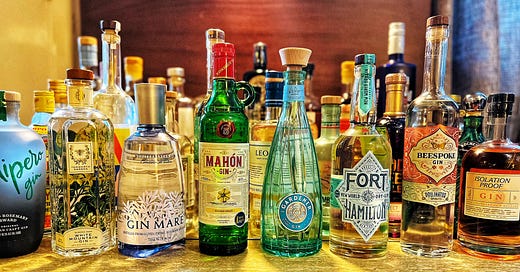



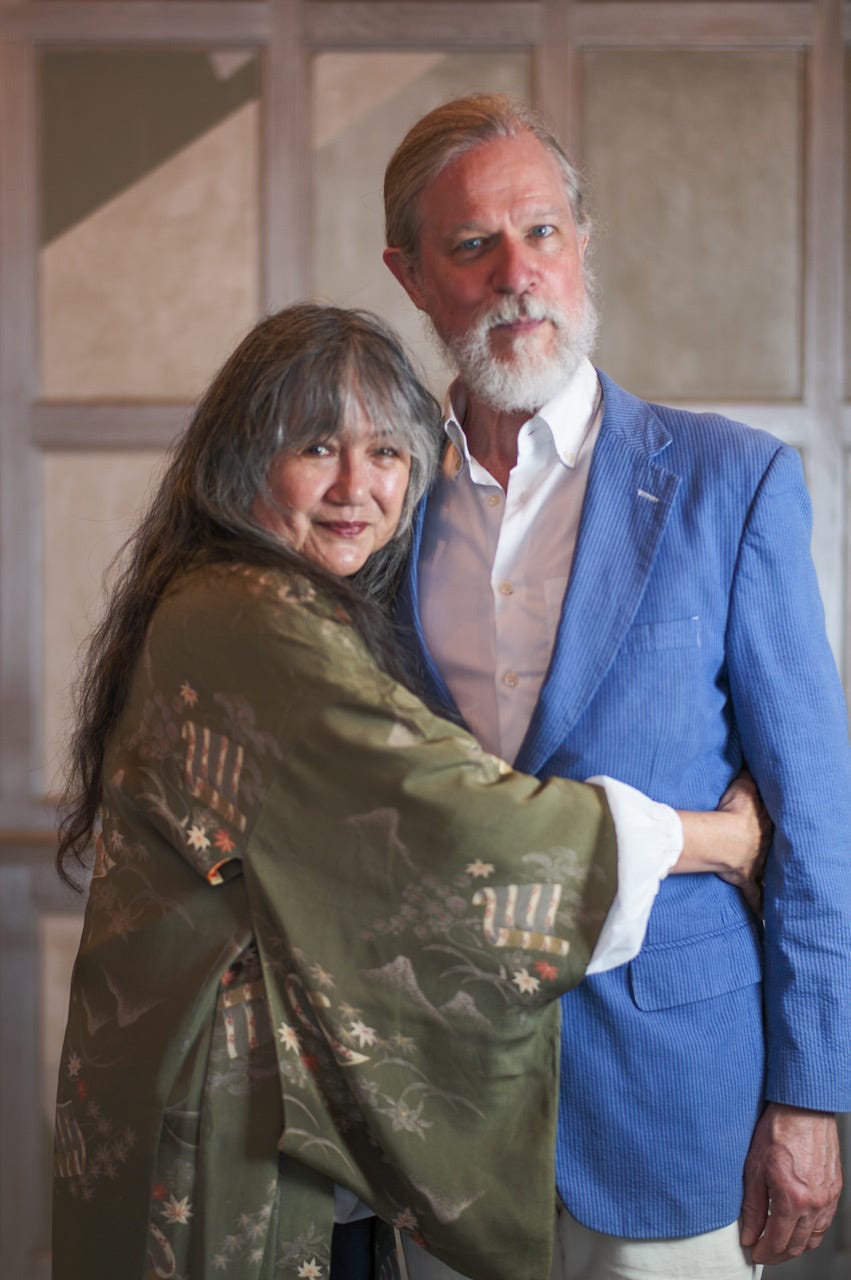




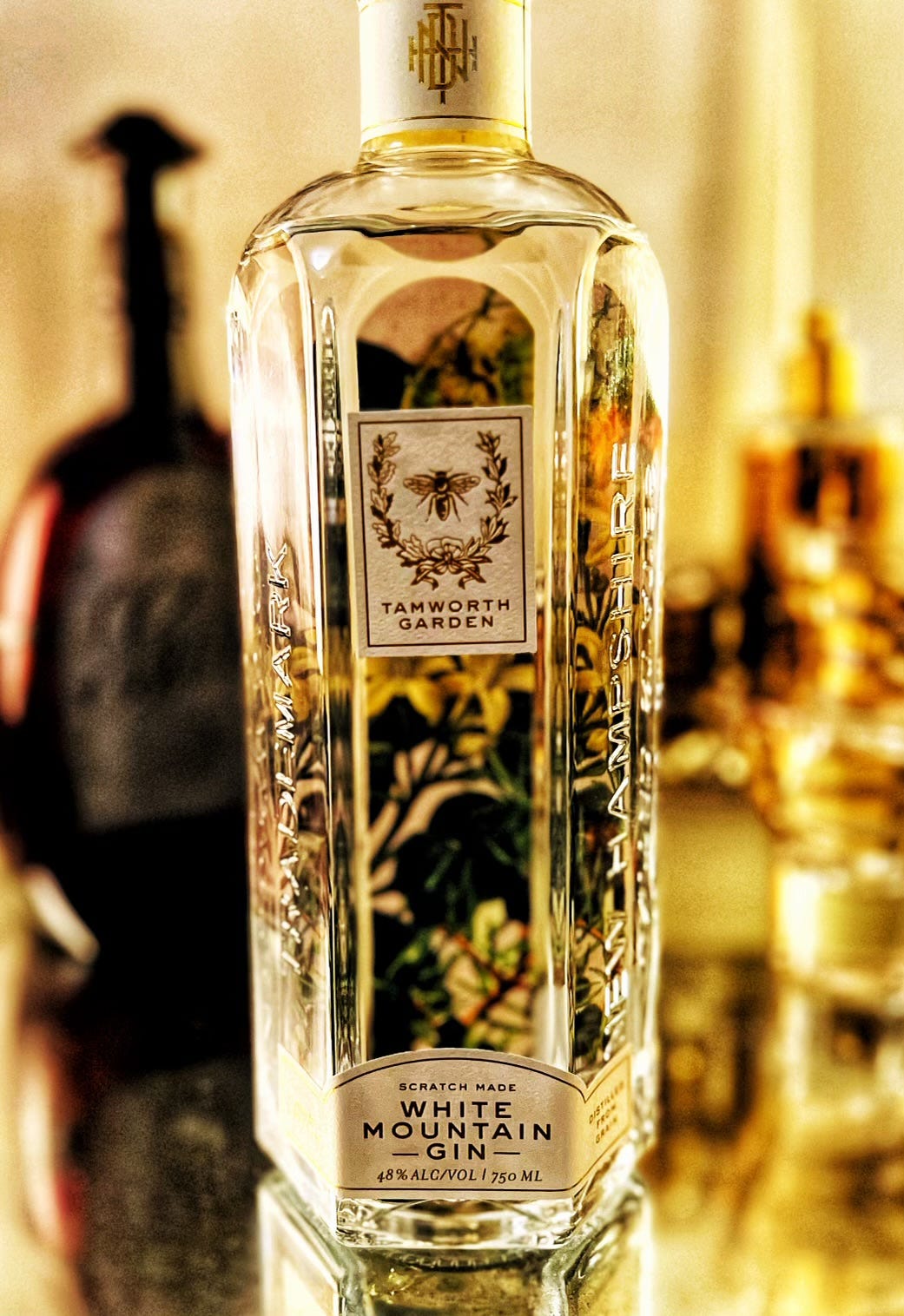
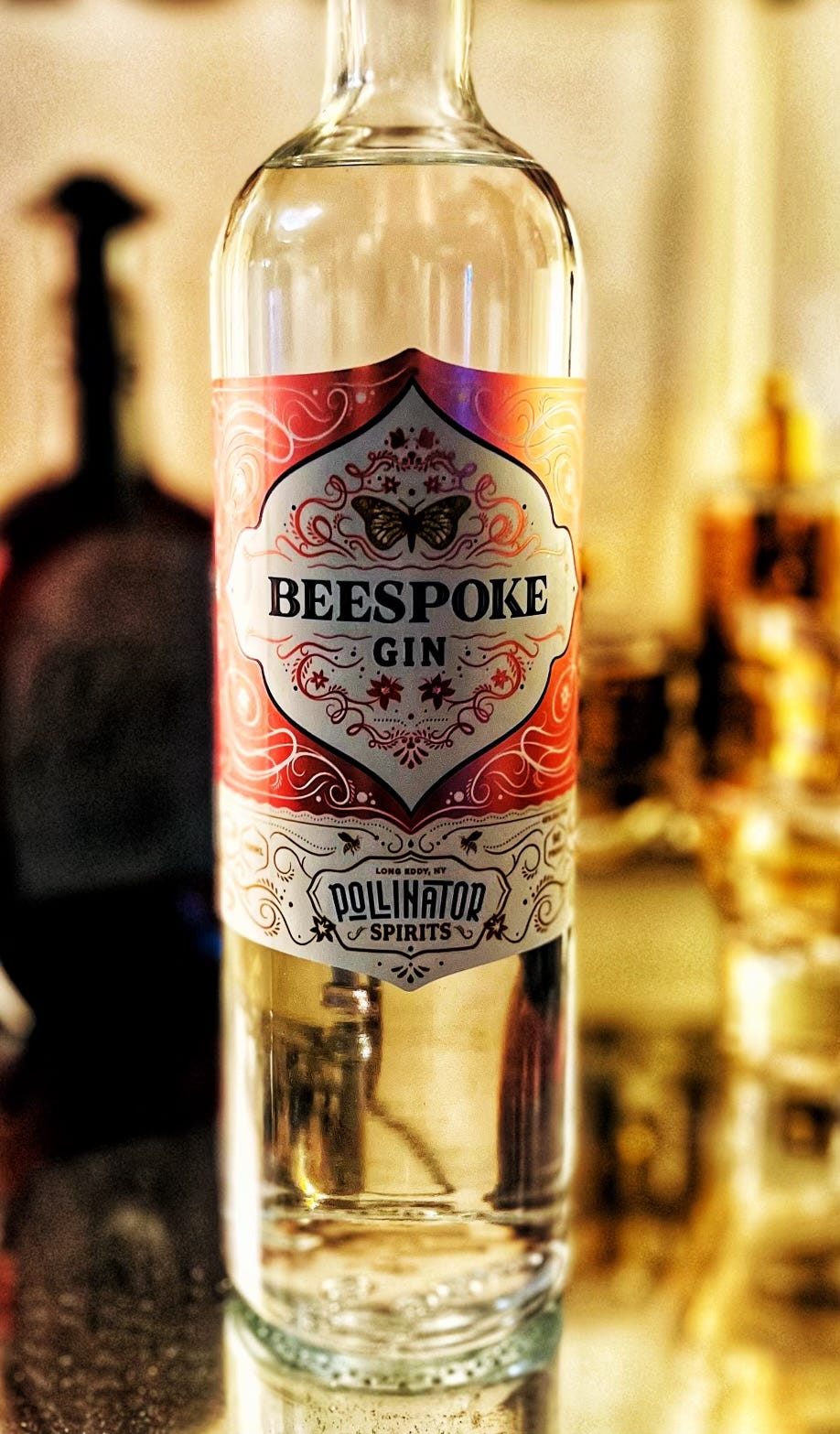



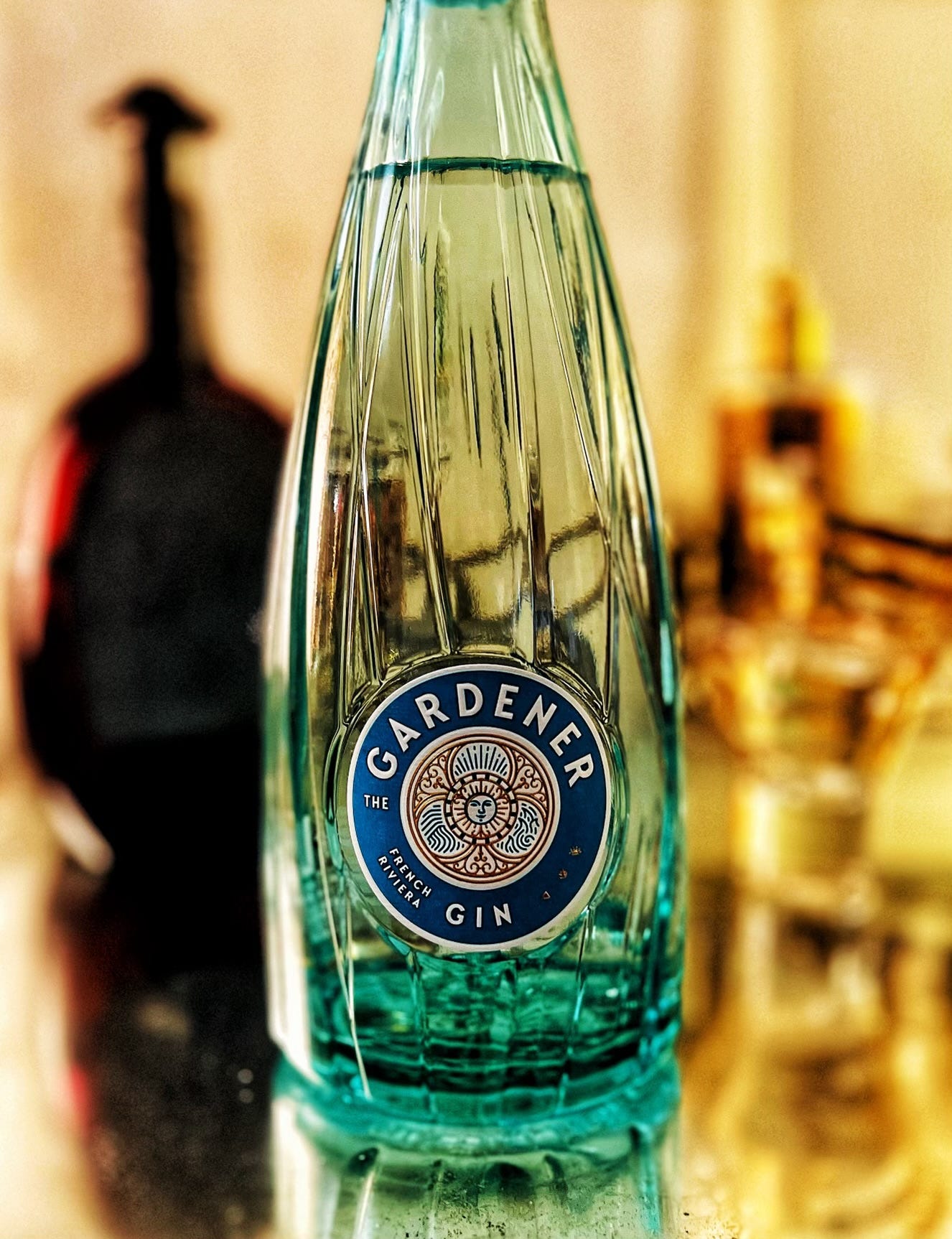
What a great interview. And amazing photo. I can’t wait to buy this book! 📕 ❤️👏👏👏
Gin Week has been so interesting! Audrey Saunders created the first modern classic cocktail I ever tasted (the Gin-Gin Mule) and send me on a path to know more about cocktails new and old. Anistatia Miller and Jared Browns The Deans of Drink got me reading about famous bartenders. And this afternoon I plan to secure a bottle of Danish gin destilled with orange ants. New gin is still going in Scandinavia too. Cheers!